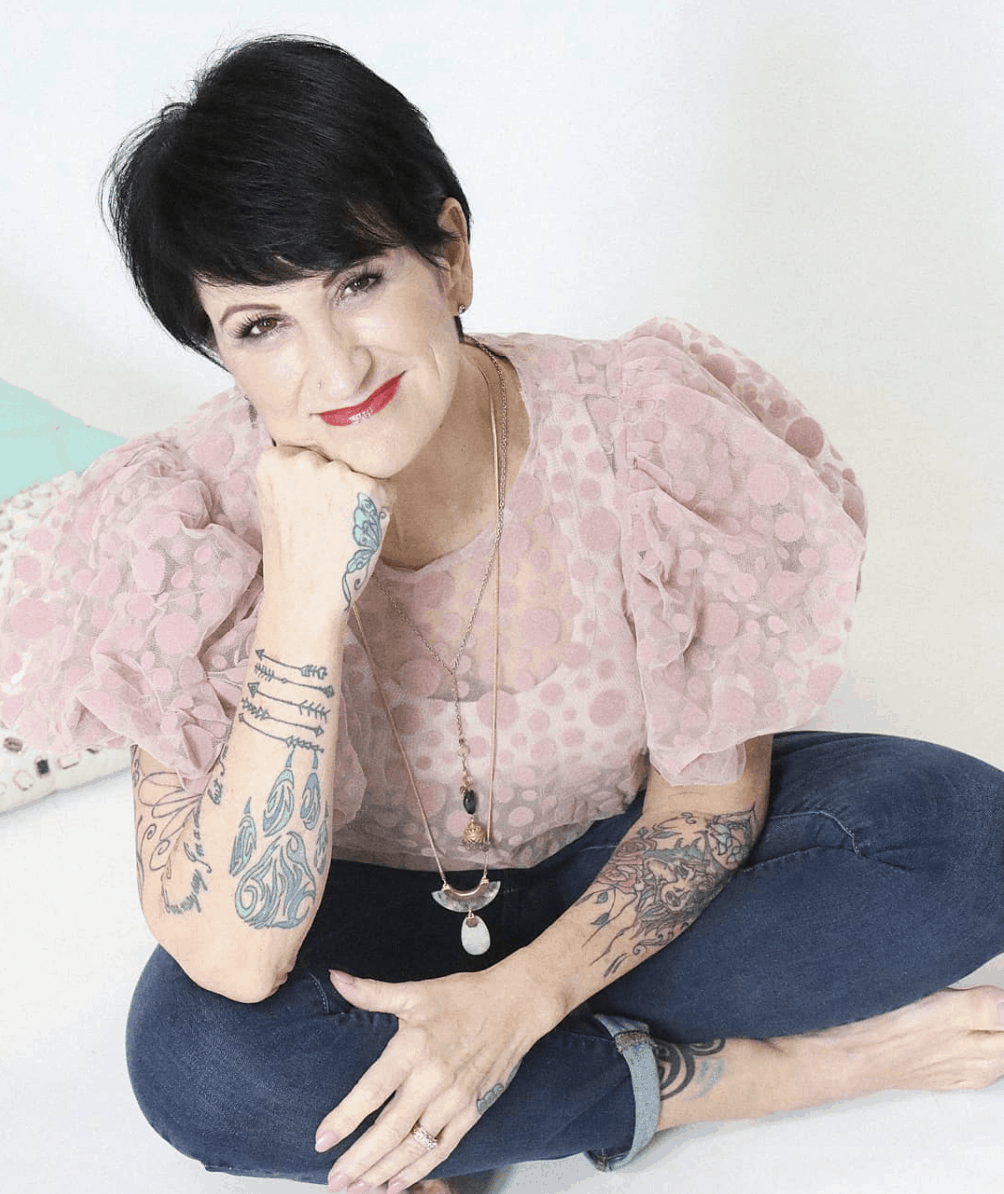Patient: Donna Thomas
Occupation: Yoga and spin instructor
Age at Surgery: 55 and 59
Procedures: Right total shoulder replacement in 2014; Left total shoulder replacement in 2021
Within four or five months of surgery, I was back to handstanding. It wasn’t just about being free from pain for me—I wanted performance.
Donna Thomas spends her life in motion. After 18 years in various instructor roles at luxury athletic resort Life Time, she considers being a personal trainer part of her DNA. She’s also a vinyasa enthusiast, with a special fondness for inversions and chaturangas. Unfortunately, Donna and all her siblings have a genetic predisposition for arthritis in many of their joints, including their shoulder, hips, and knees. At only 59, Donna has already had four joints replaced.
My life is not as fun when I cannot do my practice.
In 2015, her right shoulder began to hurt enough that she booked an appointment with Dr. Romeo; she chose him because he works with athletes. Afterwards, Donna admits she was a bit surprised by the appointment’s outcome. Although Dr. Romeo diagnosed her with end-stage shoulder arthritis, he told her she could hold off on surgery for a while if she preferred. In the meantime, he offered her treatments such as physical therapy and injections that can reduce inflammation and pain.
When Donna asked Dr. Romeo how she’d know it was time for surgery, he simply told her to listen to her body and come back when the time was right for her. “I felt like it was my decision and I was grateful for the time to go and digest it a bit more,” recalls Donna.
Two years passed before Donna returned to Dr. Romeo’s office. By this time, she couldn’t sleep at night due to shoulder pain and was eager for surgery. She already had an understanding of what the surgery would involve and felt great about her decision. She admits that the hardest part was the weeks leading up to surgery—especially since many acquaintances shared their nightmare stories. Undaunted, Donna stuck with the plan and envisioned her end goal: a pain-free handstand.
I feel like I’ll always be an athlete.

After a successful shoulder replacement surgery, Donna partnered with a physical therapist to help her reduce swelling and edema from surgery, progress forward with range of motion, then proceed through a strengthening program when cleared by Dr. Romeo for this phase of the recovery. Within four or five months, Donna was back to handstanding. Unsatisfied with a minimal level of health and function, Donna stuck closely to her rehab program and pushed herself until she regained full function. “It wasn’t just about being free from pain for me—I wanted performance,” she says.
A few years later, Donna’s other shoulder developed a nagging pain. She booked another surgery with Dr. Romeo and in the spring of 2021, she had her left shoulder replaced. “My mentality was ‘I got full function back once and I’m going to do it again.’”
In the few years since her first shoulder replacement, medicine had advanced so there were minor improvements to the process. For example, Donna woke up at 2:30 a.m. on the morning of surgery to drink an electrolyte drink four hours before surgery as part of Enhanced Recovery After Surgery protocols (ERAS) now used by Dr. Romeo. “Even the type of antiseptic [skin cleaner] I needed to order off Amazon changed,” she notes. “But the details matter and instill confidence. The preparation makes me feel like I’m a participant in the process.”

Donna’s recovery also looked different this time around, as physical therapy was limited due to the COVID-19 pandemic. Undeterred, she stuck with an at-home rehab program. In fact, she attributes her greater mobility after this surgery to gently using her arm as soon as possible. Although Donna dutifully wore her sling when outside the house, she removed it at home when she had complete control of her environment, and used her arm for simple tasks, such as brushing her teeth, bathing, getting dressed, and eating.
“Those organic movements changed the entire experience,” Donna reports. “It was like my brain reconnected to my arm much faster this time.” Of course, she resisted picking up anything heavy or endangering her healing by pushing things too quickly. After five days, she only needed Tylenol to manage her pain. Within two weeks, her shoulder no longer hurt and she was comfortable with small range-of-motion exercises.








